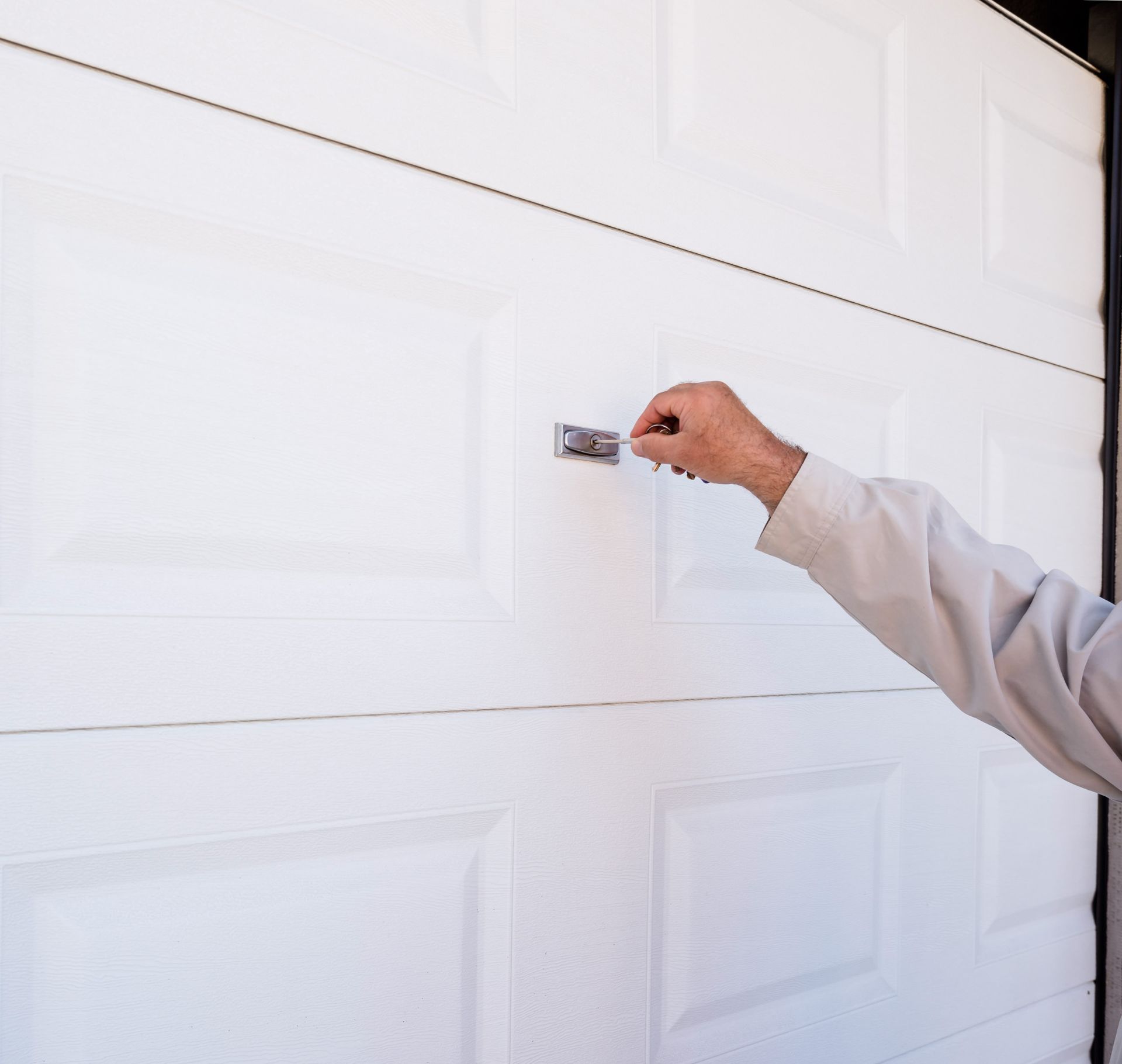Dealing with garage door opener malfunctions can be frustrating. However, understanding the common issues and their solutions is crucial. Fortunately, this blog will guide you through these issues so your opener can work to perfection. Learn effective techniques to address and resolve any garage door opener malfunctions below.
Garage Door Opener Malfunction
Is your garage door opener causing you headaches with its erratic behavior? Remote control glitches, power supply troubles, or motor malfunctions can disrupt the smooth operation of your garage door. In this guide, we’ll explore common garage door opener malfunctions and provide practical solutions to get your garage door back on track.
Remote Control Problems
When your opener doesn’t respond to the remote control, it can be frustrating and inconvenient. There are a few common reasons why this might be happening. Firstly, check if the batteries in the remote control need to be replaced. Weak or dead batteries can prevent the signal from reaching the opener. If that’s not the issue, make sure that the remote control is within range of the opener. Sometimes, obstacles or interference can weaken the signal. If you’re still having trouble, it’s possible that the remote control itself is faulty and needs to be replaced.
Another possible cause of the remote control not working is the frequency interference from other devices in the area. This can disrupt the communication between the remote control and the opener. Consider removing or moving any electronic devices that could be causing interference, such as cordless phones or Wi-Fi routers. Additionally, if your opener has a learn button, try reprogramming the remote control by following the manufacturer’s instructions. This can sometimes fix any syncing issues between the remote control and the opener.
Power Supply Troubles
If your garage door opener suddenly stops working, the first thing you should check is the power supply. A lack of power can prevent the opener from responding to remote control commands or wall switch inputs. Start by inspecting the power cord to ensure it is securely connected to an outlet. If it is, try plugging another device into the same outlet to verify if it is functioning properly. If the outlet is working but the opener still isn’t receiving power, it’s possible that the power cord or the internal wiring of the opener may be damaged. In such cases, it’s best to consult a professional to diagnose and fix the problem.
In some instances, power supply troubles can be resolved by replacing the opener’s batteries. Many remote controls and wall switches are powered by batteries, which can occasionally run out of charge. Check the battery compartment of your remote control and wall switch to see if the batteries are inserted correctly and have enough power. If the batteries are old or no longer functioning, replace them with new ones. It is also a good idea to clean the battery contacts to ensure a good connection. Once new batteries are installed, test the opener to see if it resumes normal operation.
Sensitivity Settings
Adjusting the sensitivity of your garage door opener is crucial for ensuring smooth operations and preventing any unnecessary hassle. The sensitivity settings control how much force the opener uses to open and close the garage door. If set too high, the door may close with excessive force, posing a potential risk to people or objects in its path. On the other hand, if set too low, the door may not close properly or may reverse without any apparent reason. Therefore, finding the right balance is essential to maintaining optimal performance and safety.
To adjust the sensitivity settings, start by locating the adjustment screws or knobs on the garage door opener. These are usually found on the motor housing or control panel. It’s recommended to consult your opener’s manual for precise instructions, as the location and method may vary depending on the manufacturer and model. Once you’ve located the adjustment mechanisms, you can start fine-tuning the sensitivity. Make small adjustments at a time, testing the door’s operation after each adjustment. If the door doesn’t close or reverse properly, tweak the settings until you achieve the desired performance. Remember to pay attention to any unusual noises or resistance during the door’s operation, as they could indicate underlying issues that might require professional attention.
To adjust the sensitivity settings:
- Locate the adjustment screws or knobs on your garage door opener, typically found on the motor housing or control panel.
- Consult your opener’s manual for precise instructions, as locations and methods may vary based on manufacturer and model.
- Start fine-tuning by making small adjustments one at a time.
- Test the door’s operation after each adjustment to ensure it closes properly without any issues.
- If necessary, continue tweaking until you achieve the desired performance while paying attention to any unusual noises or resistance during operation.
Motor Malfunctions
Motor malfunctions can be a frustrating issue with your garage door opener. Fortunately, most motor problems can be easily identified and fixed. One common sign of a motor malfunction is a noisy or vibrating opener. This could indicate worn-out motor bearings or a loose motor mount. To fix this issue, you can lubricate the motor bearings with a silicone-based lubricant or tighten the motor mount screws.
Another motor-related problem you may encounter is a garage door opener that stops midway during operation. This could be due to a worn-out motor capacitor or a faulty wiring connection. To identify the problem, you can check the capacitor for any signs of damage or leakage. If the capacitor is the issue, it will need to be replaced. Additionally, inspect the wiring connections to ensure they are secure and not corroded. Cleaning or replacing the wiring connections can help resolve any issues and get your garage door opener back to smooth operation.
Safety Sensor Failures
Safety sensors are a crucial component of your garage door opener, as they play a vital role in ensuring the safety of you and your loved ones. These sensors are typically located near the bottom of the garage door tracks, and their primary function is to detect any objects or obstructions in the door’s path. By doing so, they prevent the door from closing and potentially causing damage or harm.
It is important to understand that safety sensor failures can occur due to various reasons. One common issue is misalignment, where the sensors are not properly aligned with each other. This can happen if they get bumped or knocked out of place accidentally. Another possible reason is a dirty lens, which can obstruct the sensor’s ability to detect objects accurately. In some cases, the sensors may also be damaged or malfunctioning, which requires repair or replacement. Troubleshooting these malfunctions is essential, and it is recommended to consult the manufacturer’s instructions or seek professional assistance to ensure the proper functioning of your garage door opener’s safety sensors.
Wall Switch Glitches
One of the most common garage door opener malfunctions is when it doesn’t respond to the wall switch. This can be frustrating, especially if you need quick and easy access to your garage. However, before you call a professional, there are a few things you can try to troubleshoot the problem.
First, make sure that the wall switch is properly connected to the garage door opener. Sometimes, with everyday use, the wires can become loose or disconnected. Take a moment to inspect the wiring and ensure that everything is securely connected. If you notice any loose wires, simply tighten them to see if that resolves the issue. Second, check the power supply to the wall switch. Sometimes, a simple power outage or a tripped circuit breaker can cause the wall switch to stop working. Ensure that the circuit breaker for the garage door opener is in the correct position and that power is flowing to the wall switch. If necessary, reset the circuit breaker and see if that restores the functionality of the wall switch.
Drive Chain or Belt Issues
When it comes to the smooth functioning of your garage door opener, the drive chain or belt plays a vital role. Any problems with the drive chain or belt can cause your garage door opener to malfunction. One common issue that homeowners face is a loose or slack drive chain or belt. This can affect the overall performance of the garage door opener, causing it to make strange noises or struggle to lift the door. To resolve this problem, you can tighten the drive chain or belt using the adjustment screws located on the opener unit. It is important to refer to your garage door opener’s manual for specific instructions on how to adjust the drive chain or belt properly.
Another issue that may arise with the drive chain or belt is excessive wear and tear. Over time, the chain or belt may become worn out, resulting in a loose fit or even breakage. If you notice any signs of wear, such as frayed edges or visible damage, it is crucial to replace the drive chain or belt as soon as possible. Depending on the type of opener you have, this may require professional help or a DIY approach. Regular maintenance, such as lubrication of the drive chain or belt, can also help prolong its lifespan and prevent issues from arising. Remember, a well-maintained drive chain or belt is essential for the smooth operation of your garage door opener.
Track Misalignment
Track misalignment is a common issue faced by many garage door owners. There are several reasons behind this problem, but one of the main factors is the constant stress and pressure that the tracks endure. Over time, tracks can become bent or warped, causing them to move out of alignment. Another cause of track misalignment can be the loosening or shifting of the mounting brackets that hold the tracks in place.
To correct track misalignment and ensure better functioning of your garage door opener, there are a few steps you can take. First, carefully inspect the tracks to identify any visible damage or signs of misalignment. If you notice any bent sections or loose mounting brackets, they will need to be addressed. You can attempt to straighten the bent tracks using a rubber mallet or pliers, but it’s important to be gentle to avoid causing further damage. Additionally, tightening or repositioning the mounting brackets can help realign the tracks. Regular maintenance and periodic checks of the tracks can prevent track misalignment and keep your garage door opener running smoothly.

Contact Us
These are wonderful ways to reduce garage door opener malfunctions proactively. You can fortify your opener’s reliability by giving Garage Door Pros a call. We will ensure your opener remains efficient and trouble-free.

